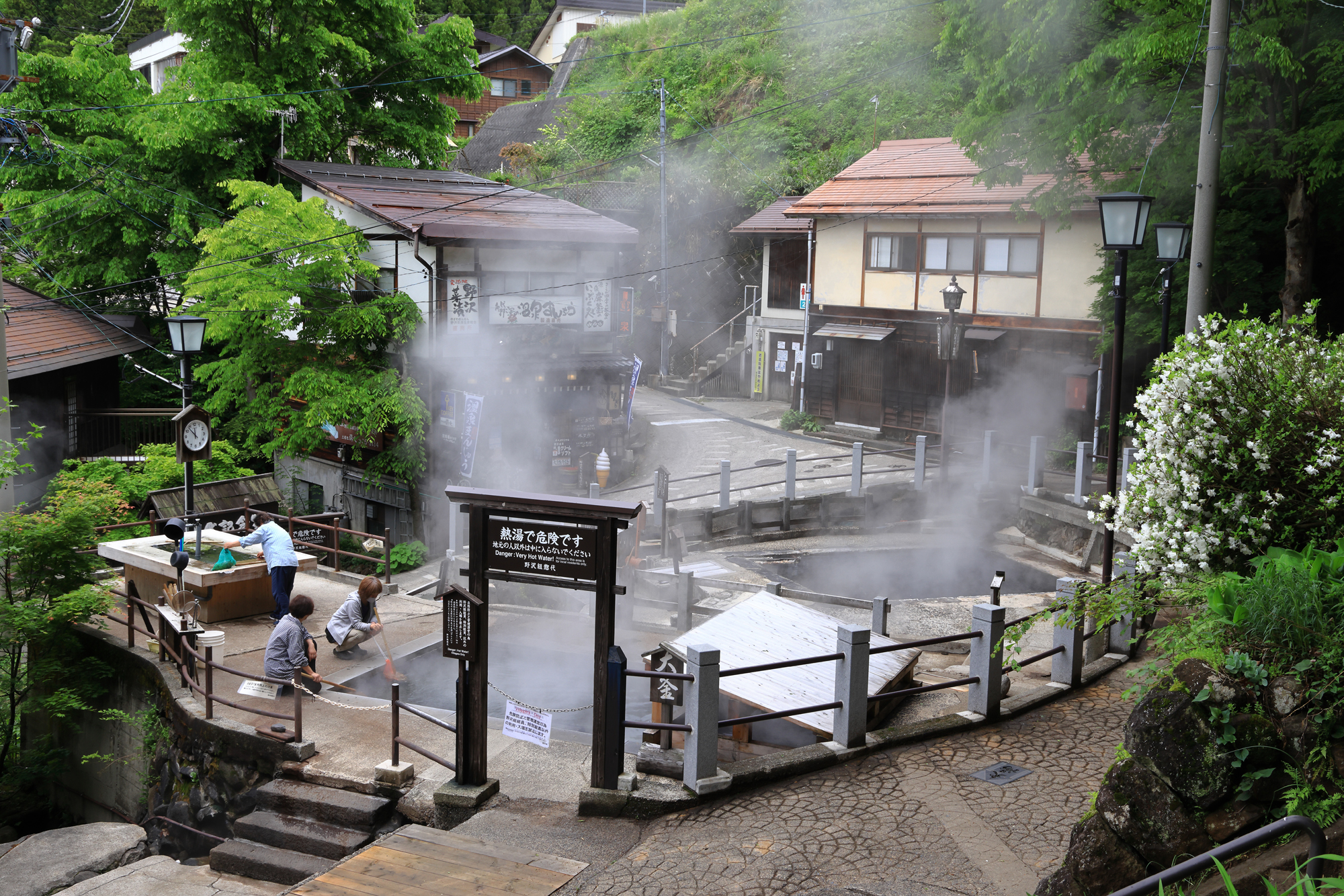Hotspring cooking and bathing

There are various stories explaining how the gensen (or main source) was discovered. Some say that it was discovered by a group of ascetics called Yamabushi who were training themselves by roaming single-mindedly deep in the mountains. While others claim it was found by a hunter who followed an injured bear that then led him to the source. There are many other legends too and while we may never know the true origins for certain, we do know that the springs around Nozawa Onsen have been in use for many generations.
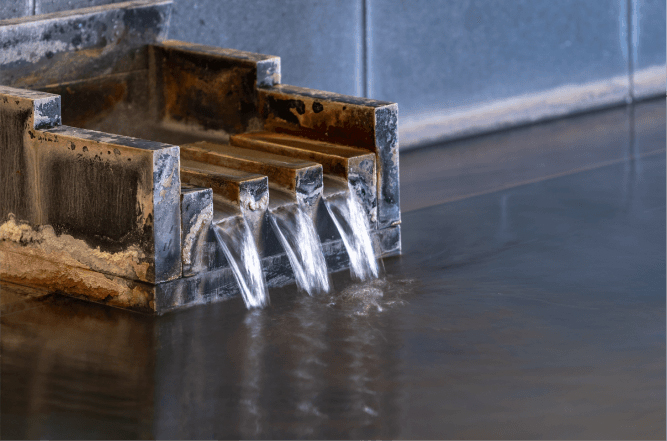
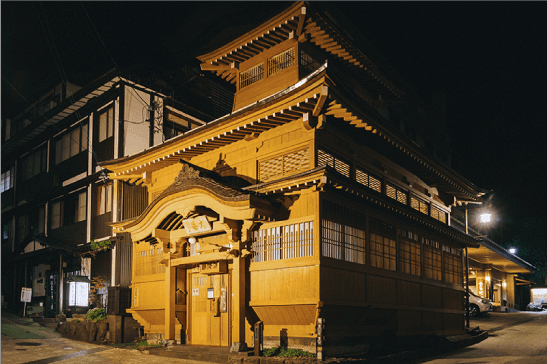
Today Nozawa onsen is a popular hot-spring health resort thanks to efforts of the local villagers in developing the town and its springs for all of us to enjoy.
In the village’s Onsen district there are thirteen unique public bathhouses called “SOTOYU” and visitors can sample any or all of them on a relaxing onsen pilgrimage.

One of Nozawa Onsen’s must-see spots is Ogama:
The village’s charming communal open-air kitchen, which is the hottest spring amongst the thirty sources in Nozawa Onsen. It is located above the main street (Oyu-dori), and just below the entry to the “Yu road” travellator.
Villagers use Ogama’s five pools, through which 90-degree celsius steaming-hot mineral water endlessly flows, for washing, soaking vines for weaving, and boiling vegetables and eggs.
And you can see why they continue to flock to this community hub—the mineral-rich hot spring water gives the food an extraordinary, delicious taste, especially the area’s signature leaf vegetable: Nozawa-na.
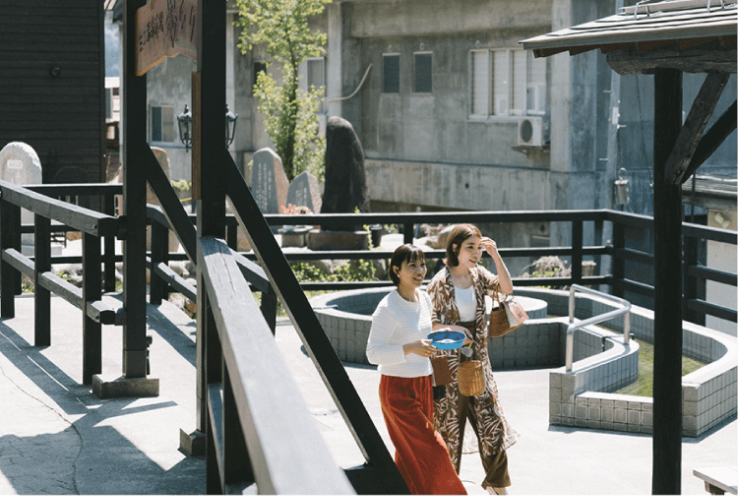
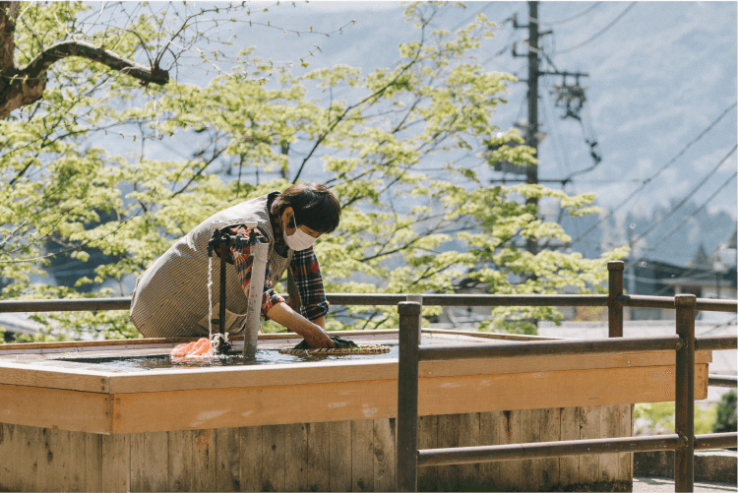
But don’t start dreaming up your own onsen-enhanced culinary creations just yet; Access to Ogama is restricted to community members. And for safety reasons, visitors are not allowed to go near the pools, but you can still observe the spectacle from a safe distance. The best views are in the morning.
And there’s no need to miss out on the food. To get a taste of the legendary onsen eggs, walk down the alleyway that connects Ogama with Yurari onsen (a terrace-like open space, housing one of the public foot-baths as well as a tub for boiling pre-purchased eggs).
Along that short alley you can find pre-cooked onsen eggs and other vegetables to sample or you can buy some to cook yourself at Yurari.
The eggs need about twenty minutes until they are ready to eat, but a relaxing foot-bath combined with a superb view of Nozawa Onsen definitely makes it worth the wait.

An egg’s yolk begins to solidify at about 65 degrees celsius, and the white solidifies at around 80 degrees. Onsen-tamago are a special type of boiled egg made by utilizing the steady temperatures of the onsen. Raw eggs are put into water with a temperature of around 65 to 68 degrees.
Onsen-tamago are eggs in which the yolk is firm but not solid, while the white is no longer clear but not fully solidified.
Onsen-tamago are cooked in the temperature between which an egg’s yolk and its white solidify.
In contrast to ordinary soft-boiled eggs, onsen-tamago are characterized by the condition that the white is softer than the yolk.


The steady temperature of the onsen (hot springs) make this an easy way to prepare the perfect egg, and Japanese style hotels operating at hot spring resorts have often served this type of boiled egg, and this is why those boiled eggs are called “onsen-tamago.”
Onsen-tamago are usually served with the shell removed, in a small cup with a dashi and soy broth.
Boiled as they are, at a low temperature, onsen tamago also retain the sterilizing enzyme lysozyme, which eliminates the risk of food poisoning.
Why don’t you come to the onsen district and try making onsen-tamago yourself?
Where onsen-tamago can be made:
- Ogama: (villagers only). You can buy pre-cooked onsen tamago at the adjacent souvenir shops.
- Mini-onsen-hiroba “Yurari”: Very close to Ogama. (Closed during winter).
- Kamitera-yu (communal bathhouse)
- Kumanotearayu (communal bathhouse)
- Matsuba-no-yu (communal bathhouse)
- Jyuoudo-no-yu (communal bathhouse)
- Timing for the perfect onsen egg is a little different at each location so follow the signs at the cooking station.
- You can buy eggs and mesh bags to cook the eggs in at many shops in the village.

A little information about onsen
The best way to experience onsen is by taking your time and enjoying the calming atmosphere. Let your mind go blank and relax!
Nagano prefecture is an “Onsen Kingdom”
Nagano Prefecture—formerly called Shinshu—is one of the most famous “Onsen Kingdoms” in Japan, with 236 onsen areas, 1,043 gensen (sources), and hot spring water flowing at 133,787 litres per minute.
Rich in a variety of hot spring qualities, eleven different types of spring can be found in this prefecture.
What possible positive effects can be expected from onsen?
Three effects can be expected from onsen:
- “Chemical effects”
Absorption through the skin and/or drinking onsen elements, which facilitates recovery from illness or injury. - “Psychological effects”
The experience of the natural environment and atmosphere of the onsen area, away from daily life, which helps reduce stressors and has a positive influence on the mind and body。 - “Physical effects”
The actual temperature and water pressure of the onsen stimulates the metabolism and helps recovery from fatigue.
How is the hot spring water drawn to each bathhouse?
The act of drawing hot spring water from the gensen to the bathtub is called intou. There are three methods of drawing water, and each onsen facility chooses the most suitable one depending on the situation: 1) Drawing directly from the gensen; 2) Drawing from a communal hot water storage facility; 3) Delivery by tank truck or plastic tanks.
All of the soto-yu in Nozawa-onsen use method 1) drawing their hot water directly from the gensen.
What is the etiquette for taking a communal bath in Japan?
These are a few important things to remember before taking and onsen:
Wash your body before getting in the bathtub.
Do not jump into the bathtub.
Do not take your towel into the bathtub.
Dry your body with your towel before going back to the dressing room or changing area.
If you follow these basic onsen rules and show consideration to other users, you will have a relaxing onsen experience.

